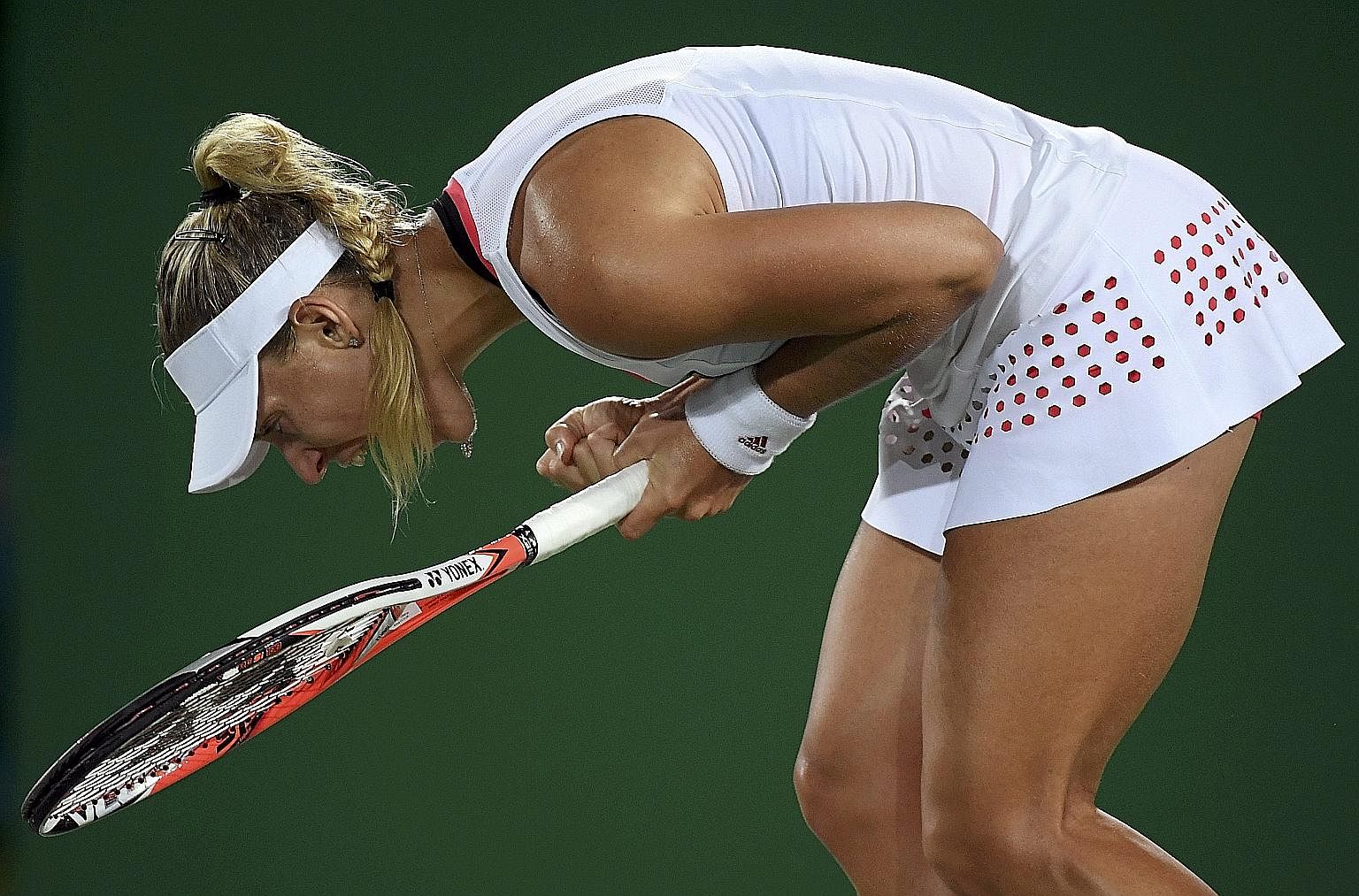The woman whose strokes this year have made the most telling noise in tennis is talking at a volume barely above a whisper. Off court, in this small room at the National Tennis Centre in Beijing, with other people working around her, she blends in with a polite quietness; on court all year, with a forehand that licks lines and using the urgent speed of a fleeing thief, she has stood out.
Angelique Kerber is a 1.73m dream catcher, history maker, stereotype basher, Serena beater. She's redefined the age you can peak at, hit drop shots in January we're still sighing over in October, worn conviction like a rugged halo and reminded us of the beautiful fragility of sport. In tennis' tightrope walk, greatness and anonymity is sometimes separated by a single point.
Match point down to Misaki Doi in the first round of the Australian Open, if she loses maybe she becomes Fraulein Forgotten, returned to the talented heap of the almost-great. But she wins that point, the match, the Open, and comes to Singapore for the WTA year-end championships with a resume you could retire with: Wimbledon finalist, Olympic runner-up, Australian Open champion, US Open winner.
And yup, this also: No. 1.
Says her coach Torben Beltz, who is unshaven, amiable, two stories tall and talks like a tennis yogi caught in a stream of consciousness: "It was very good for her to start the year with a big shot at the Australian Open. It was very important for her for the whole year. She got a big confidence boost."
In sports' library of cheerful stories, up there with the underdog, the comeback, the last-minute miracle, is this Kerber one of reinvention. It's a tale of tenacity. Of discovering a way. Of finding a toughness which turns a 15-12 three-set record in 2015 into a 16-6 stat in 2016. Of debuting at No. 1 at 28, the oldest ever to do that, which sends out its own cheekily delightful message: youth is over-rated.

-

3Weeks that Angelique Kerber has been at No. 1 in the world rankings. It will be four tomorrow.
28
Kerber's age when she became world No. 1 for the first time on Sept 12, the oldest women's player to reach the summit.
16-6
Kerber's win-loss record in three-set matches this year, an improvement from her 15-12 record last year.
Since 1987, from the time Steffi Graf ruled, 17 women have been No. 1. Their average age - at the time they first held that ranking - is 20.9. Four of them were teenagers - the last, Maria Sharapova, 18, in 2005 - and the oldest No. 1 in recent times was Amelie Mauresmo, 25, in 2004. By this measure, Kerber qualifies as seriously ancient.
We can draw blood from athletes and examine genes, but the athletic body and mind is an enigma. Think long-torso Michael Phelps and long-legged Usain Bolt. Think Serena who was No. 1 at 20 and is still surviving the physical abuse of tennis at 35. Think Kerber who is offering evidence that you can peak past your mid-20s. Like Stan Wawrinka, she is lovely proof of the late bloom. To use a quote attributed to the German philosopher Arthur Schopenhauer, "Just remember, once you're over the hill you begin to pick up speed."
Beltz would not disagree. As he says: "If you work hard every day, if you improve your tennis, if you improve your fitness, there's still a chance to win the big things at 27, 28, 29." Kerber is his echo: "You have to go for it and you have to be ready and you have to practise really hard, it doesn't matter how old are you."
And, yes, it doesn't hurt to chuck a little superstition into this brew. Beltz the bearded doesn't just become anti-razor when Kerber wins, he's also choosy about his headwear. "At her matches I try to wear the same hat. If she wins first round (and I am wearing a) blue hat, then I try to have the blue hat all the way." Of course, he's grinning.
Kerber and Beltz - together for 10 years, followed by a short split, then a reunion - have made sport's most mysterious leap: from good to great. Think of it as a baffling jigsaw solved through perseverance and whose reward is confidence.
It comes, Kerber says "with experience and from a lot of tough matches which I won and also which I lost." It comes with a hustling spirit driven by a leaner, lighter body. We might wonder, why wasn't she fitter before, but these pieces of the jigsaw, they can't be forced: The athlete has to be ready and convinced and then discover herself bit by bit. There's a time for everything and this is the time of Kerber.
Now you can see the shine of her self-belief on court for she doesn't just win points, she seizes them. "Of course," she says when I ask if confidence has pushed her to take risks, "sometimes you have to go for it and not hoping that the other one will miss. This is what I learnt, taking the game in my hands and going for it."
Beltz can see it, too, for her body language sings of a sweaty assuredness. "For sure, she looks fitter," he says. "Also her behaviour is more like a champion. At crucial moments, at important points, she's not hiding, she's really out there, she wants to win the point.
"If you look at her at 5-5 in the third set you can see she wants to win this match and wants to go for big shots."
Kerber failed to make the quarter-finals in Wuhan and Beijing and with autumn has come fatigue. Her challenge isn't just a grinding Tour but this new skin of celebrity she has to wear, this life where everything is more: titles, fame, media, autographs, attention. "Much more people recognise you," she says "when you are going on the street, in the airport."
Kerber has to negotiate not just this altered life, but a wounded Williams, a rising pack and possibly a last battle at the WTA Finals to see who ends the year as No. 1. Singapore promises to be thrilling, tense, life-changing but presumably it's what she dreamed of. With unflinching modesty she says, "I am still the same person" and yet she has finally become a different player. The best one in the whole, wide world.

